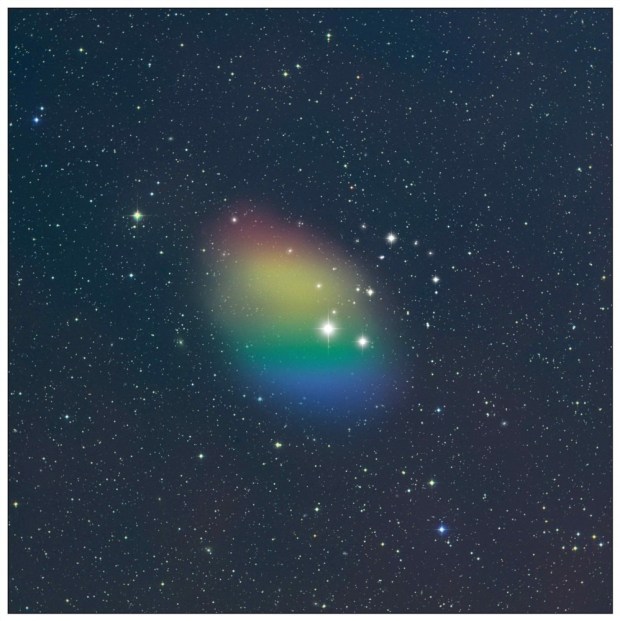
[ad_1]

Astronomers may have found a dark, primordial galaxy — an enormous, undisturbed mass of cold hydrogen gas that has yet to form any stars — sitting in the modern-day universe.
If confirmed, the object could offer astronomers a look at an early stage of galactic evolution. “I’ve been in this field for quite a few decades, and we’ve wanted to find something like this for a very long time,” study leader Karen O’Neil, an astronomer at the Green Bank Observatory in West Virginia, tells Astronomy.
The first hint of something unusual was a discrepancy between observations made by the Green Bank Telescope (GBT) and the Nançay Radio Telescope in France as part of a coordinated survey of faint galaxies. Though they were supposed to be looking at the same patch of sky, the 100-meter-wide GBT was seeing something the Nançay Radio Telescope wasn’t.
“Upon looking a little bit closer at it and spending far too much time, we discovered that we had actually mistyped the coordinates in the GBT catalog,” O’Neil said Jan. 8 at a press conference at the winter meeting of the American Astronomical Society (AAS) in New Orleans. “This is something, unfortunately, astronomers do occasionally late at night.”
The GBT’s radio observations indicated there was a spiral-galaxy-sized cloud of gas — a couple billion Suns’ worth — rotating at about the same speed as the Milky Way. But surveys in visible light showed nothing. “We went back and said, ‘All right, well, what did we detect?’” said O’Neil. “And what we actually found was there was nothing there. … So that means what we might have here — might — is the discovery of a primordial galaxy,” a galaxy of gas that is too spread out for its gravity to pull stars together. The galaxy, dubbed J0613+52 and located roughly 270 million light-years away, is also isolated from any other galaxies that might disturb it or trigger it to clump up and begin forming stars.
The Green Bank Telescope. Credit: NSF/GBO/D. Green
Primordial galaxies must be rare, says O’Neil. Otherwise, previous surveys of neutral hydrogen by the now-defunct Arecibo Observatory in Puerto Rico would have uncovered some before.
“Part of my caution is when you finally find something you’ve been hoping to see for a long time, you’re always just, ‘Is this really it this time? Did we do it?’” O’Neil says. But this one certainly is by far the best candidate we’ve seen.” To confirm the galaxy’s primordial nature, the team will seek approval to aim a large optical telescope at it for tens of hours — ironically, in the hopes of seeing nothing at all. “Even if we can detect it, it’s still going to be insanely low surface brightness, and it’s still going to be really exciting,” says O’Neil. “If we can’t detect it, that’s going to be pretty fascinating, too.”
This article was originally published on Astronomy.com and updated by Discover Staff. Read the original here.
[ad_2]